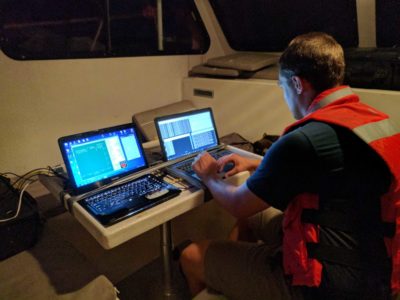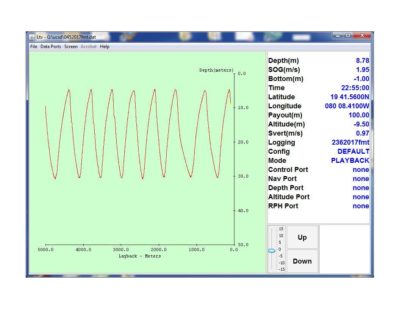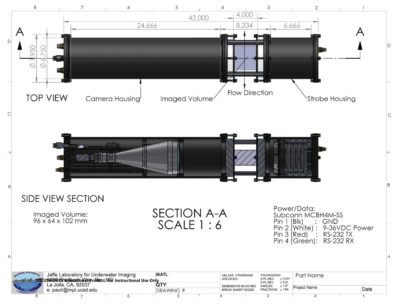

Acrobat and Microscope control and data collection laptops.
ARLINGTON, MA, Aug 14, 2019. Creation of a professional working liaison between Scripps Institution of Oceanography, the Cayman Islands Dept of Environment, and Sea Sciences, Inc. resulted in a successful field data collection effort in support of the endangered Nassau Grouper in the Cayman Islands.

Acrobat track with microscope payload.
In November of 2016, Sea Sciences was contacted by Scripps graduate students, Brian Stock and Andy Mullen for information regarding the possibility of using our Acrobat tow vehicle to support a prototype underwater microscope which would be used to track the fine-scale dispersal of eggs from a Nassau Grouper spawning aggregation.
The difficulty would be designing, manufacturing, and delivering a payload frame in time for the anticipated spawning in Little Cayman, during the full moon in February 2017.

Acrobat with Scripps microscope ready for deployment.

Grouper spawn horizontal diffusion island.
This became more of a challenge when it was decided to support the latest microscope design, that would require towing at a right angle to the tow track. The microscope, a coupled light and camera assembly, measured over one meter long and 20 cm in diameter with an uneven weight and drag distribution.
Christian Casagrande, Pres. Sea

Scripps microscope.
Sciences, Inc suggested that he join the field effort in Little Cayman because of the uncertainty of initial towing results which might require changes in configuration and computer setup for towing. This was indeed the case when the first deployment resulted in a one-way dive.
Before the next deployment, a group discussion on the causes and possible remedy resulted in a perfectly controlled undulation providing real time microscope data immediately and for several days, after the spawning.
The scientific results from the grouper survival and dispersal program are just being made available. Anyone who is interested in more details can contact Christian Casagrande and/or Dr. Brian Stock, b1stock@ucsd.edu.
Sea Sciences, Inc. www.seasciences.com
